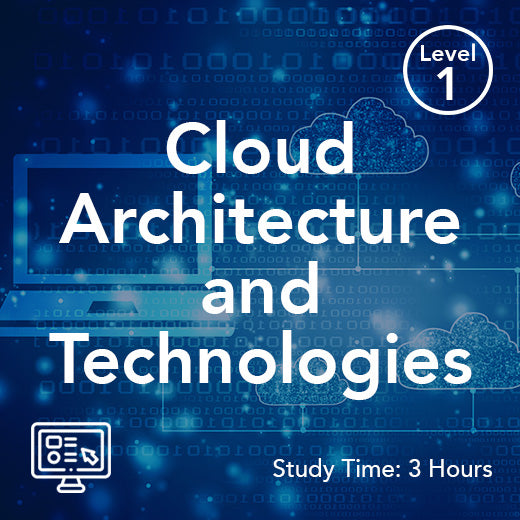ETSI'yi Anlamak: Standartlar ve Etkilerine İlişkin Bir Kılavuz
- , by Stephanie Burrell
- 10 min reading time
Hızla gelişen teknoloji dünyamızda, standartların rolünü anlamak her zamankinden daha önemli. Avrupa Telekomünikasyon Standartları Enstitüsü veya ETSI, teknolojinin Avrupa genelinde ve ötesinde nasıl kullanıldığını şekillendirmede kilit bir rol oynuyor. Mobil ağlardan akıllı şehirlere kadar ETSI, farklı sistemlerin sorunsuz bir şekilde birlikte çalışmasını sağlayan kuralları oluşturuyor. Bu kuruluş, cihazlarımızın ve sistemlerimizin birbirleriyle uyumlu olmasını sağlamak için temel oluşturmaya yardımcı oluyor. Merkezi Fransa'da bulunan ETSI, 65 ülkeden 900'den fazla üye kuruluşla çalışan, kâr amacı gütmeyen bir kuruluştur. Bu üyeler, standart geliştirme sürecinde yer alan çeşitliliği ve uzmanlığı yansıtan özel şirketler, araştırma kurumları, akademi, hükümet ve kamu kuruluşlarından oluşmaktadır. Bu kılavuzda, ETSI standartlarının günlük yaşamlarımızı ve bir bütün olarak teknoloji sektörünü nasıl etkilediğini inceleyeceğiz.
ETSI'ye Giriş
Avrupa Telekomünikasyon Standartları Enstitüsü (ETSI), teknolojik gelişmelerin merkezinde yer almaktadır. Bu bölümde ETSI'nin kökeni, telekomünikasyon sektöründeki önemi ve önemi hakkında genel bir bakış sunulacaktır.
Bazı ETSI standartları AB içinde hukuksal güce sahip olabilir ve ETSI'nin çalışmaları Avrupa düzenlemelerini ve düzenleyici çerçevelerini destekler ve bunlarla uyumludur.
ETSI nedir?
ETSI, bilgi ve iletişim teknolojileri için küresel ölçekte geçerli standartlar geliştiren lider bir kuruluştur. Bu standartlar, iletişim ağları ve sistemlerinin Avrupa genelinde etkin bir şekilde çalışmasını sağlamada önemli bir rol oynar. ETSI'nin kapsamı sabit, mobil, radyo, birleşik, yayın ve internet teknolojilerini kapsar. ETSI, bu standartları belirleyerek ürün ve hizmetlerin rekabetçi olmasını ve kullanıcı beklentilerini karşılamasını sağlar.
ETSI'nin çalışmaları, cihazlar arasında birlikte çalışabilirlik ve uyumluluğu sağlayarak çeşitli sektörleri etkilemektedir. Bu, kesintisiz iletişim ve verimlilik için olmazsa olmazdır. Merkezi Fransa'da bulunan ETSI, 65 ülkeden 900'den fazla üye kuruluşla çalışan, kâr amacı gütmeyen bir kuruluştur. Bu üyeler arasında üreticiler, tedarikçiler, ağ operatörleri, servis sağlayıcılar, araştırma kuruluşları ve devlet kurumları bulunmaktadır.
ETSI'nin telekomünikasyon sektöründeki çalışmaları hayati önem taşıyor; farklı teknolojilerin birbirleriyle iletişim kurmasını sağlayarak iyi bağlantılı bir dünya yaratılmasına olanak sağlıyor.
Tarih ve Evrim
ETSI, 1988 yılında öncelikle Avrupa bölgesine odaklanarak kurulmuştur. Yıllar içinde küresel çapta önemli bir etki yaratmıştır. Başlangıçta amacı Avrupa'daki telekomünikasyon standartlarını uyumlu hale getirmekti, ancak kapsamı küresel standartların geliştirilmesini de kapsayacak şekilde genişletilmiştir.
ETSI'nin evrimi birkaç aşamada anlaşılabilir:
1988-1998: Avrupa standartlarının kuruluşu ve ilk geliştirilmesi.
1999-2008: Küresel pazarlara açılım ve mobil standartların tanıtımı.
2009-Günümüz: IoT ve 5G gibi gelişmekte olan teknolojilere odaklanın.
ETSI'nin tarihi, standartlarını ve faaliyetlerini teknolojik değişimlere yanıt olarak geliştirme ve gelecekteki ihtiyaçları öngörme becerisiyle öne çıkmaktadır. Bu uyum yeteneği, ETSI'nin güncelliğini korumasını ve standart geliştirme alanında liderliğini sürdürmesini sağlamaktadır.
Telekomünikasyonda Önemi
ETSI'nin telekomünikasyondaki rolü abartılamaz. Sektör geliştikçe, uyumluluk ve verimliliği garanti altına alan standartlara olan ihtiyaç daha da belirginleşti. ETSI, farklı teknolojilerin sorunsuz bir şekilde birlikte çalışmasına yardımcı olan bir çerçeve sunuyor .
ETSI’nin telekomünikasyondaki önemi şunlardır:
Uyumluluğun Sağlanması: Standartlar, farklı üreticilere ait cihazların iletişim kurmasına olanak tanır.
Yeniliğin Teşviki: ETSI, istikrarlı bir platform sağlayarak yeni teknolojilerin geliştirilmesini teşvik eder.
Verimliliğin Artırılması: Standartlar süreçleri kolaylaştırır, maliyetleri düşürür ve hizmet sunumunu iyileştirir.
Sektördeki Zorlukların Ele Alınması: ETSI, standartları aracılığıyla sektörün temel zorluklarının ele alınmasını sağlar.
ETSI'nin katkıları, teknolojilerin bir arada var olabileceği ve etkili bir şekilde iş birliği yapabileceği bağlantılı bir dünyanın sağlanmasında temel öneme sahiptir.
ETSI Standartlarına Genel Bakış
Bu bölüm, ETSI tarafından geliştirilen standartları ele almaktadır. Temel standartları vurgulamakta, geliştirme sürecini açıklamakta ve ETSI'nin küresel etkisini tartışmaktadır.
ETSI ayrıca elektronik imzalar için standartlar geliştirerek, güvenli ve güvenilir dijital imzalama süreçlerini garanti altına almaktadır.
Temel Standartlar ve Rolleri
ETSI, çeşitli sektörlere hitap eden birçok standart geliştirmektedir. Temel standartlardan bazıları şunlardır:
GSM (Küresel Mobil İletişim Sistemi): Ses ve veri hizmetlerinde devrim yaratan bir mobil iletişim standardı.
5G Standartları: Gelecek nesil mobil ağların daha yüksek hız ve daha fazla bağlantıyı desteklemesini sağlamada kritik öneme sahiptir.
IoT Standartları: Çeşitli cihazların birbirine bağlanması ve verimli bir şekilde iletişim kurabilmelerinin sağlanması için gereklidir.
Bu standartlar, tutarlı ve yüksek kaliteli iletişim hizmetlerinin sağlanmasında hayati önem taşır. Sektörler, bu standartları takip ederek ürünlerinin mevcut teknolojilerle uyumlu olmasını ve tüketici beklentilerini karşılamasını sağlayabilir.
Geliştirme Süreci Açıklandı
ETSI'de standart geliştirme süreci kapsamlı ve iş birliğine dayalıdır. Genel olarak şu şekilde ilerler:
Öneri Aşaması: Üyeler yeni standartlar veya mevcut standartlara yönelik güncellemeler önerirler.
Komite Değerlendirmesi: Komite, teklifin uygulanabilirliğini değerlendirir.
Taslak Hazırlama: Uzmanlar, standardın yazım ve taslak hazırlama süreçlerine liderlik eder, çalışmaları organize eder ve taslakları güncel tutar. Yazım süreci, dokümantasyon ve yapı sorumluluğunu birden fazla üyenin paylaştığı, mevcut teknolojilerin ve gelecekteki ihtiyaçların dikkate alınmasını sağlayan iş birlikçi bir süreçtir.
İnceleme ve Onay: Taslak incelemeye tabi tutulur ve geri bildirimlere göre geliştirilir.
Yayınlama: Onaylandıktan sonra standart yayınlanır ve erişime açılır.
Bu yapılandırılmış süreç, standartların sağlam ve zaman testine dayanıklı olmasını sağlar. Ayrıca, çok çeşitli paydaşlardan gelen girdilere olanak tanıyarak, sektör ihtiyaçlarını karşılayan kapsamlı standartlar sağlar.
ETSI Standartlarının Küresel Etkisi
ETSI standartları Avrupa'nın ötesinde de derin bir etkiye sahiptir. Genellikle uluslararası standartların temelini oluşturarak küresel birlikte çalışabilirliği sağlarlar. Bu etki çeşitli şekillerde kendini gösterir:
Küresel kuruluşlar tarafından benimsenmesi: Uluslararası Telekomünikasyon Birliği (ITU) gibi kuruluşlar sıklıkla ETSI standartlarını benimser.
Diğer standart kuruluşlarıyla işbirliği: ETSI, dünya çapında standartları uyumlu hale getirmek için diğer kuruluşlarla yakın bir şekilde çalışmaktadır.
Bu küresel erişim, ETSI'nin uluslararası standartlar alanında önemli bir oyuncu olmaya devam etmesini, dünya çapında bağlantı ve iletişimi kolaylaştırmasını sağlar.
Organizasyon ve Çalışma Yöntemleri
ETSI'nin yapısı
Avrupa Telekomünikasyon Standartları Enstitüsü (ETSI), Avrupa ve dünya genelinde iletişim teknolojilerinin gelişimini yönlendiren küresel ölçekte uygulanabilir BT standartlarının geliştirilmesinden sorumlu lider bir kuruluş olarak öne çıkmaktadır. Avrupa Birliği tarafından resmi olarak Avrupa Standartları Örgütü olarak tanınan üç kuruluştan biri olan ETSI'nin yapısı, çok çeşitli paydaşlar arasında inovasyonu, kapsayıcılığı ve iş birliğini teşvik etmek üzere özel olarak oluşturulmuştur.
ETSI'nin faaliyetlerinin merkezinde teknik komiteler, endüstri spesifikasyon grupları ve özel komiteler yer almaktadır. Bu gruplar, küçük özel şirketler, araştırma kuruluşları, akademi, devlet kurumları ve kamu kuruluşları da dahil olmak üzere çeşitli bir üye havuzundan temsilcilerden oluşmaktadır. Bu geniş üyelik yapısı, ETSI'nin teknik spesifikasyonlarının ve Avrupa telekomünikasyon standartlarının, BT sektöründe yer alan tüm kilit paydaşların ihtiyaç ve uzmanlıklarını yansıtmasını sağlar.
ETSI'nin Fransa, Sophia Antipolis'teki merkezi, 60'tan fazla ülke ve beş kıtadan üyelerin kapsayıcı bir ortamda bir araya geldiği merkezi bir merkez görevi görmektedir. Burada, endüstri, akademi ve hükümet liderleri, hızla değişen dijital dünyanın zorluklarını ele almak ve BT destekli sistemlerin, hizmetlerin ve platformların geleceğini şekillendirmek için iş birliği yapmaktadır. Kuruluşun kamu güvenliği, emniyeti ve birlikte çalışabilirliğe olan bağlılığı, standardizasyon sürecinin her aşamasında açıkça görülmektedir.
Şeffaflık ve açıklık, ETSI'nin çalışma yöntemlerinin temelini oluşturur. Standartların geliştirilmesi, ilgili tarafların kapsamlı inceleme, test ve katkılarına tabi olan titiz bir süreçtir. ETSI'nin temel belgeleri ve teknik özellikleri, bağlantılı dünyada uyumluluğu ve birlikte çalışabilirliği destekleyerek yaygın olarak kullanıma sunulmaktadır.
ETSI, küresel bir uzman ve paydaş topluluğunu bir araya getirerek, Avrupa telekomünikasyon standartlarının teknolojik ilerlemenin ön saflarında kalmasını sağlar. Kuruluşun vizyonu, güvenli, yenilikçi ve birbirine bağlı bir Avrupa'yı destekleyerek, iletişim teknolojisindeki gelecekteki gelişmelerin temelini oluşturmaktır. ETSI, sorumlu yaklaşımı ve mükemmelliğe olan bağlılığıyla, dijital toplumumuzun temelini oluşturan standartları şekillendirmeye devam etmektedir.
Telekomünikasyon Endüstrisi Üzerindeki Etki
ETSI standartları, ağ uyumluluğunu artırarak, yeni teknolojileri destekleyerek ve tüketici cihazlarını etkileyerek telekomünikasyon sektörünü önemli ölçüde etkilemektedir. Standardizasyondan sorumlu birincil kuruluş olan ETSI ve üyeleri, bu standartları sürdürme ve sürdürme, sektör genelinde etkinliğini ve güvenilirliğini sağlama sorumluluğuna sahiptir.
Ağ Uyumluluğunun Geliştirilmesi
ETSI'nin temel görevlerinden biri ağ uyumluluğunu sağlamaktır. ETSI, standartlar belirleyerek farklı ağların etkili bir şekilde iletişim kurmasını sağlayarak kullanıcılara kesintisiz hizmetler sunar.
Birlikte Çalışabilirlik: Standartlar, farklı üreticilerin cihazlarının birlikte çalışabilmesini sağlar.
Kalite Güvencesi: Tutarlı standartlar, güvenilir ve yüksek kaliteli iletişim hizmetlerine yol açar.
Maliyet Azaltma: Ağ sağlayıcıları, süreçlerin basitleştirilmesi sayesinde azalan maliyetlerden faydalanır.
ETSI'nin bu alandaki çalışmaları, verimli ve etkili iletişim ağlarının sürdürülmesi açısından büyük önem taşıyor.
Gelişmekte Olan Teknolojilerdeki Rol
Yeni teknolojiler ortaya çıktıkça, ETSI bunların geliştirilmesinde kritik bir rol oynar. Bu, Nesnelerin İnterneti (IoT) ve 5G gibi alanları da kapsar. ETSI, standartlar belirleyerek bu teknolojilerin güvenli, güvenilir ve birlikte çalışabilir olmasını sağlar.
IoT: Standartlar milyarlarca cihazın birbirine bağlanmasını kolaylaştırarak, bunların sorunsuz bir şekilde birlikte çalışmasını sağlar.
5G: ETSI standartları, daha yüksek hızları ve daha fazla bağlantıyı destekleyen yeni nesil mobil ağların etkinleştirilmesinde temel öneme sahiptir.
ETSI'nin bu alanlardaki katılımı, teknolojinin geleceğini şekillendirmedeki önemini ortaya koymaktadır.
Tüketici Cihazları Üzerindeki Etki
ETSI standartları, tüketici cihazlarını da etkileyerek mevcut teknolojilerle uyumlu olmalarını sağlar. Bu standartlar şunları içerir:
Cihaz Uyumluluğu: Standartlar, cihazların ağlar ve diğer cihazlarla iletişim kurabilmesini sağlar.
Kullanıcı Deneyimi: Tutarlı standartlar, cihazların beklendiği gibi çalışmasını sağlayarak daha iyi bir kullanıcı deneyimine yol açar.
Pazar Rekabeti: Standartlar, eşit şartlar oluşturarak tüketici elektroniği pazarında rekabeti ve yeniliği teşvik eder.
ETSI'nin çalışmaları, tüketicilerin güvenilir ve uyumlu cihazlara erişimini sağlayarak genel deneyimlerini geliştiriyor.
ETSI ve Uluslararası İşbirliği
ETSI'nin rolü, ortaklıkları ve uluslararası standartları uyumlaştırma çabalarıyla Avrupa'nın ötesine uzanmaktadır. ETSI ve ortakları tarafından küresel iş birliğini ve bilgi alışverişini teşvik etmek amacıyla çok sayıda uluslararası konferans, çalıştay ve iş birliği etkinliği düzenlenmektedir. Bu bölümde, bu iş birlikleri ve karşılaşılan zorluklar ele alınmaktadır.
Küresel Kuruluşlarla Ortaklıklar
ETSI, küresel standartların uyumunu sağlamak için çeşitli uluslararası kuruluşlarla iş birliği yapmaktadır. Bu ortaklıklar, fikir ve uzmanlık alışverişini kolaylaştırarak standartların kapsamlı ve dünya çapında uygulanabilir olmasını sağlar. Akademisyenler ve endüstriden araştırmacılar, bu iş birliği çalışmalarında bilgi birikimlerini paylaşarak ve inovasyonu teşvik ederek kilit rol oynarlar.
ITU Ortaklığı: Uluslararası Telekomünikasyon Birliği ile ortak standartlar geliştirmek için çalışır.
3GPP ile İşbirliği: Mobil telekomünikasyon standartları için Üçüncü Nesil Ortaklık Projesi'ne katılıyor.
ETSI, bu ortaklıklar aracılığıyla tutarlı bir küresel standardizasyon ortamının yaratılmasına katkıda bulunmaktadır.
Uluslararası Standartların Uyumlaştırılması
ETSI, uluslararası standartların uyumlu hale getirilmesinde önemli bir rol oynamaktadır. Bu çaba, ürün ve hizmetlerin sınırlar ötesinde uyumluluk sorunları olmadan çalışabilmesini sağlar. Temel unsurlar şunlardır:
Tutarlılık: Uyumlu standartlar farklı bölgelerde tutarlı performansa yol açar.
Verimlilik: Birden fazla standarda olan ihtiyacı azaltır, ürün geliştirmeyi basitleştirir ve maliyetleri düşürür.
Küresel Kapsam: Avrupa teknolojilerinin uluslararası alanda etkin bir şekilde rekabet edebilmesini sağlar.
Küresel ticaretin teşvik edilmesi ve teknolojik uyumun sağlanması için standartların uyumlu hale getirilmesi büyük önem taşıyor.
Küresel Koordinasyondaki Zorluklar
ETSI, tüm çabalarına rağmen küresel standartları koordine etmede zorluklarla karşı karşıyadır. Bu zorluklar şunlardır:
Çeşitli Düzenlemeler: Farklı ülkelerin farklı düzenleyici gereklilikleri vardır.
Teknolojik Farklılıklar: Teknolojinin benimsenmesinde ve gelişme düzeylerinde farklılıklar.
Jeopolitik Faktörler: Siyasi gerginlikler işbirliği çabalarını etkileyebilir.
Bu zorlukların üstesinden gelmek, standartların dünya çapında etkili bir şekilde uygulanabilmesini sağlayarak uluslararası paydaşlar arasında sürekli diyalog ve iş birliğini gerektirir.
ETSI'nin Gelecek Beklentileri
İleriye baktığımızda, ETSI'nin geleceğin teknolojilerini şekillendirme ve zorlukların üstesinden gelmedeki rolü kritik öneme sahip olacak. ETSI'nin geleceğe yönelik etkinliklerinin, atölyelerinin ve test faaliyetlerinin çoğu, inovasyonu ve iş birliğini desteklemek amacıyla Sophia Antipolis'teki ETSI merkezinde düzenleniyor. Bu bölümde, yaklaşan projeler ve gelecekteki taleplere yönelik hazırlıklar ele alınıyor.
Yaklaşan Standartlar ve Projeler
ETSI, gelişmekte olan teknolojilere yönelik yeni standartlar üzerinde aktif olarak çalışmaktadır. Bu projeler, aşağıdaki alanlara odaklanarak gelecekteki yenilikler için temel oluşturmayı amaçlamaktadır:
Yapay Zeka: Yapay zeka teknolojilerinin etik ve etkili olmasını sağlayacak standartların geliştirilmesi.
Siber Güvenlik: Gelişen siber tehditlere karşı koruma sağlamak için standartların geliştirilmesi.
6G Ağları: 5G'nin başarısını temel alarak, gelecek nesil mobil teknolojiye hazırlanmak.
Bu projeler, ETSI'nin teknolojik eğilimleri öngörme ve gelecekteki taleplere hazırlanma konusundaki proaktif yaklaşımını vurgulamaktadır.
ETSI'nin Geleceğin Teknolojilerindeki Rolü
ETSI, geleceğin teknolojilerinin geliştirilmesinde önemli bir rol oynamaya devam edecektir. Standartları belirleyerek ETSI, bu teknolojilerin güvenli, güvenilir ve birlikte çalışabilir olmasını sağlar. Odaklanılan temel alanlar şunlardır:
Sürdürülebilirlik: Çevre dostu teknolojilerin teşvik edilmesi.
Dijital Dönüşüm: Dijital ekonomiye geçişi desteklemek.
Akıllı Şehirler: Akıllı teknolojilerin kentsel ortamlara entegrasyonunu sağlamak.
Bu teknolojilerin etkili ve sorumlu bir şekilde uygulanmasını sağlamada ETSI'nin katılımı kritik öneme sahip olacak.
Gelecekteki Zorluklara Hazırlık
Teknoloji geliştikçe, ETSI'nin de gelecekteki zorluklara hazırlıklı olması gerekiyor. Bu zorluklar şunları içeriyor:
Standartların Uyarlanması: Teknolojik gelişmeleri yansıtacak şekilde standartların sürekli güncellenmesi.
Güvenlik Endişelerinin Giderilmesi: Yeni tehditlere karşı koruma sağlamak için standartların iyileştirilmesi.
Yeniliğin Teşvik Edilmesi: Destekleyici standartlar aracılığıyla yeni teknolojilerin geliştirilmesinin teşvik edilmesi.
ETSI'nin bu zorluklarla başa çıkmaya hazır olması, standart geliştirme alanında lider konumunu korumasını ve teknoloji sektörünü geleceğe taşımasını sağlayacaktır.
A

































